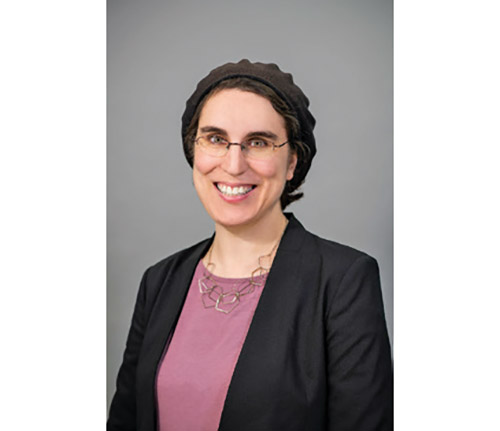
The third chapter of Pirkei Avot ends with a cryptic statement on the importance of various areas of study: “Rabbi Eliezer Chisma said: The laws of bird offerings (kinnin) and opening of niddah—these, these are the bodies of halachot (hen hen gufei halachot). Astronomical calculations (tekufot) and numerology (gematriot) are appetizers (parparot) of wisdom.” Nearly every word of this statement needs parsing.
At the outset, we may note that both pairs of topics that Rabbi Eliezer Chisma has chosen involve detailed mathematical calculations and carry Torah implications. So what is the difference between them?
At first glance, R. Eliezer Chisma is setting up a contrast: the detailed halachot of bird offerings and menstrual calendars may seem unappealing, even repulsive, but they are truly important. Astronomy and gematria may seem more inherently attractive, and may garner more respect in the eyes of other people, but are just appetizers, secondary to the real meal. Although the areas of study seem deceptively similar, they are not, R. Eliezer Chisma warns, of equal weight.
What makes the birds and niddah so important? Perhaps their practical ramifications (Rashi; Yachin), or the fact that they are prime areas for the development of the oral law (R. Ovadia Bartenura). Or perhaps it’s not that these areas are inherently worth more than other areas of Halacha, but that even these obscure, largely mathematical areas are fitting subjects to which to devote the bulk of one’s Torah-study energies (Yachin).
What of the “appetizers”? They may be more attractive or tasty, but they are not, themselves, a full meal. The mishnah tells us to keep our priorities straight and focus our energies on the study of Halacha, even—or perhaps especially—obscure and unglamorous areas of Halacha.
That is one reading, but it leaves several questions open.
First, textually, Rabbi Eliezer Chisma seems to mix metaphors: the first pair of topics are “bodies of halachot.” The second are “appetizers to wisdom.” Are “bodies” and “appetizers” really opposites? And is wisdom the same as Torah?
Second, what is wrong with studying astronomy? The Gemara in Shabbat (75a) in fact cites opinions that studying tekufot is a mitzvah, and that one who has the skill but fails to use it is the subject of the verse “They do not take notice of the work of God, and they do not see His handiwork” (Isaiah 5:12). If studying astronomy is praiseworthy—a way to “take notice of the work of God”—why does R. Eliezer Chisma seem to denigrate it?
- R. Matityah ha-Yitzhari, a Spanish scholar of the 15th century, writes that R. Eliezer Chisma is pointedly telling us to prioritize areas of study that lead to concrete action (such as bird offerings and niddah) over areas of study that generate intellectual understanding alone. This is true even for the study of astronomy, which has indirect practical applications for the calendar. In R. Matityah’s words, “connection (devekut) to God is achieved by means of action,” not pure thinking, and not even thinking about God’s handiwork.
One can also understand R. Eliezer Chisma as saying the opposite, however. Meiri understands Rabbi Eliezer Chisma to be using these specific areas of law not for what they contain but for what they represent: Kinin is a tractate in Seder Kodshim, and Niddah is a tractate in Seder Taharot. Kodshim and Taharot, in turn, are the last two orders of the Mishnah, and are often considered difficult or obscure. Astronomy and numerology, in turn, are the first areas one should study when embarking on a course of studying general wisdom.
What Rabbi Eliezer Chisma is saying, then, is that one should study the entire Torah, with all its “meat and wine” (the staples of a meal—akin to “meat and potatoes”), before moving on to the abstract forms of wisdom referenced in the second half of the mishnah. According to the Meiri, R Eliezer Chisma is saying that “after he makes himself complete in the wisdom of the Talmud, he may begin with other forms of wisdoms,” the entry point to which would be the calculations of astronomy and numerology.
Taking a similar reading one step further, Tosafot Yom Tov (R. Yom Tov Lipman Heller, 1579-1654) writes that tekufot and gematriot are not specific areas of study by which one begins one’s general education, but instead stand in for two large areas of study: what we might call physics (astronomy) and metaphysics (numerology).
Is R. Eliezer Chisma telling us to focus on the nitty gritty of Halacha and de-emphasize abstract philosophizing? Or is he telling us to use a solid grounding in Torah to propel us into the wider halls of the intellect and the soul?
When both readings are possible, it is tempting to choose the one that matches what we already think. Those who love getting lost in technical halachic details may prefer the reading of R. Matityah, whereas those who long to spice up the meat and potatoes of Halacha by taking in wisdom from more sources may prefer Meiri and Tosfot Yom Tov.
Perhaps, however, the two need to complement each other. Those of us inclined to technical details should hear R. Eliezer Chisma telling us that there may come a point where we need to branch out into other areas of contemplation. And those of us who rush for the “appetizer” topics should hear him calling us back to make sure we are well rooted. The best way to make sure that happens is to stay in conversation with our texts and with each other.
By Miriam Gedwiser
Miriam Gedwiser teaches Talmud and Tanach at the Ramaz Upper School and is on the faculty of the Drisha Kollel, an immersive summer learning experience for college students and recent graduates. She is a consulting editor for The Lehrhaus, and lives in Teaneck with her family.








